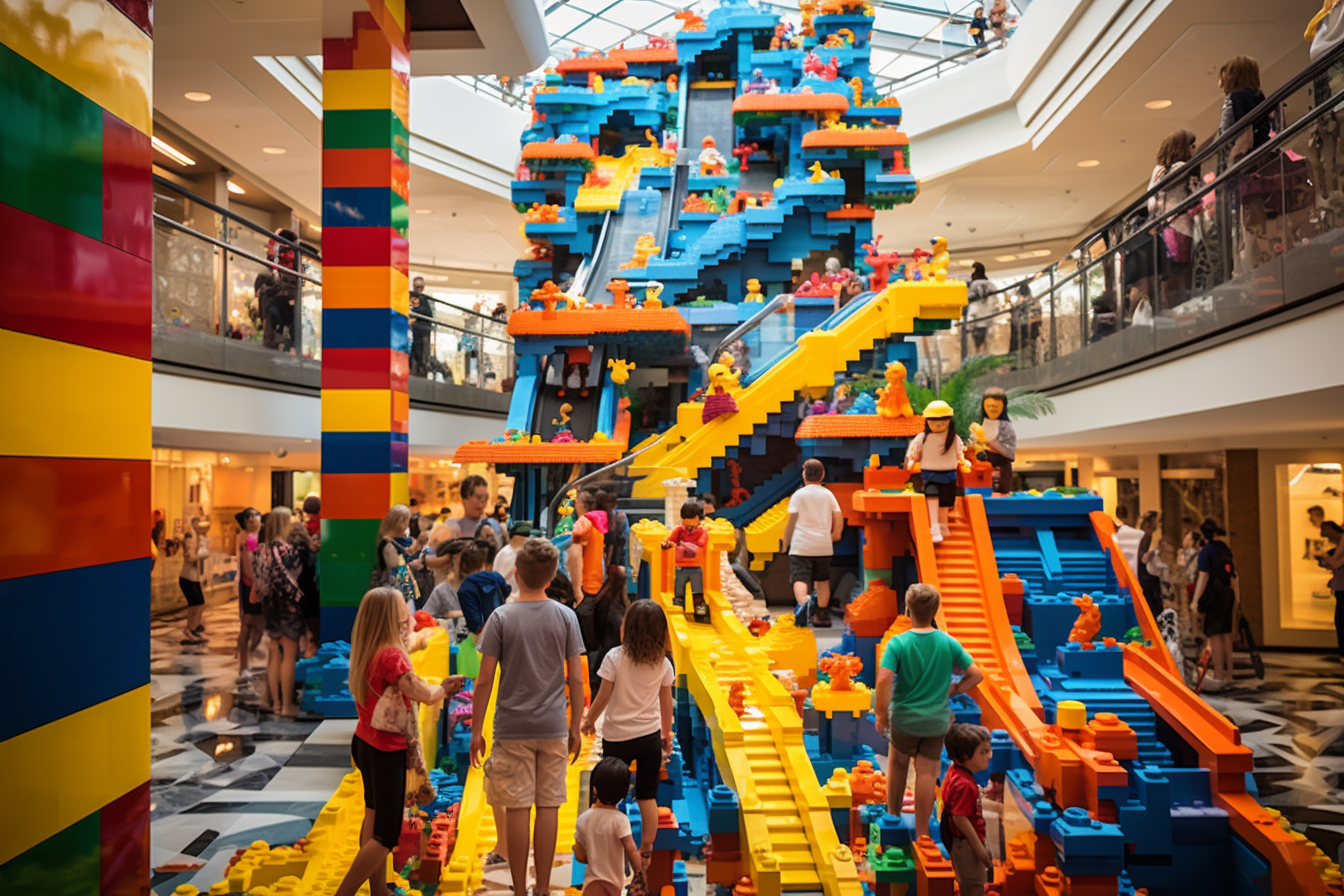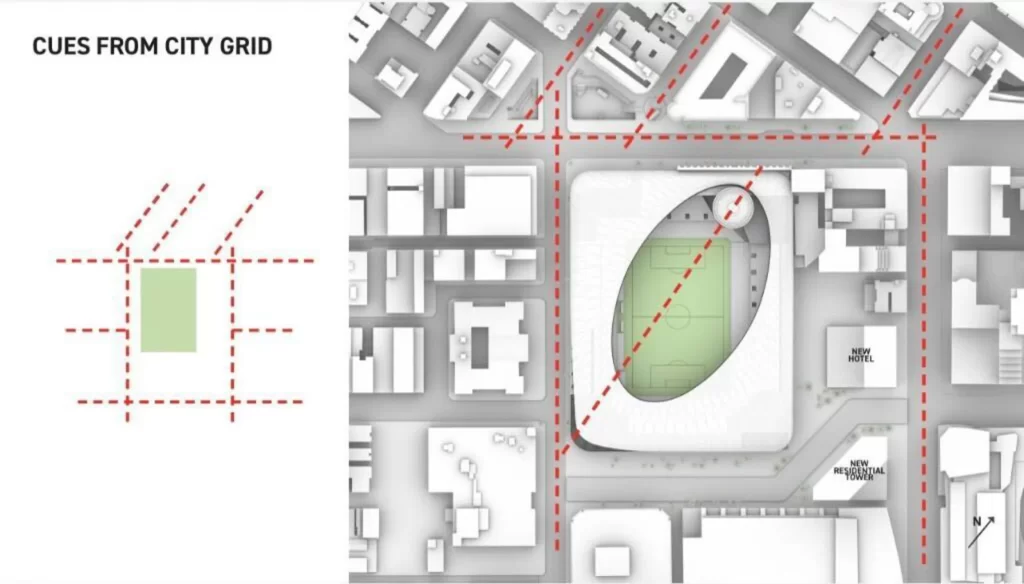THINKING: projects research
Goodbye Nordstrom, Hello Legoland San Francisco

The short of it:
The city has the opportunity to place Legoland San Francisco as a major tourist destination at low cost directly across from the cable car turnaround, connected to BART and Muni light rail stations with a huge parking garage in the back. By converting the vacant Nordstrom store into an indoor Legoland, the City can piggyback on the resurgence of tourism and also draw in families from around the region. IKEA has opened up just down the street to big crowds and a lot of enthusiasm―Legoland is the obvious next step.
There is already a Lego shop in the mall that is enormously popular―what would be better than expanding it to the 300,000 square foot footprint of the now-vacant Nordstrom location on the top floors? Imagine riding the curved escalators up to a world of multicolored bricks! The centerpiece of it, of course, would be the City of San Francisco rendered in 3D pixelated glory. I can see the Lego cable cars climbing the hills now.
Legoland California was attracting 3 million people a year to suburban Carlsbad in 2015. While it’s hard to compare an outdoor park to what would be possible at Legoland San Francisco, even attracting 1 million people a year (about 2,700 a day) to Market Street would have a sizable economic impact and support the rest of the mall – not to mention the surrounding neighborhood.
The longer story:
How Has San Francisco’s Downtown Mall Evolved and What Challenges Does It Face Today?
Downtown San Francisco’s problems have been covered extensively in the press, and many people have been working to bring people back to the City’s core now that remote work has become a permanent fixture at many companies. One of the casualties of the downturn (and shift to online retail) has been San Francisco’s downtown mall.
Many retailers have left, including Nortstrom who has been weighing an exit at the end of their lease for years. Even before the pandemic there were plans to convert part of their store at their space to offices. It is an awkward space completely disconnected from the street at the top of a set of curved escalators hidden away from view. It was very much en vogue more than 30 years ago when it opened but is much less of an attraction now (enclosed malls have struggled nationwide as retail has shifted to outdoor ‘lifestyle centers’).
The mall was expanded to the east when the former Emporium Department Store site was demolished (except for the street facing wall and the dome) and rebuilt prior to opening in 2006. The mall was a finalist for “World’s Best Shopping Center” and one a “Best-of-the-Best” award for design and development. Westfield was part of the development team that built the new mall, and operated as an equity partner with Forest City when it opened.
Fast forward to 2023 and Westfield has announced they will stop making loan payments and give the property back to the lender. While many people pointed to this as a San Francisco problem, Westfield had announced plans to unload its portfolio of US properties several years earlier as they focused on their holdings in Europe. They also have a pattern of turning over properties to lenders: Westfield stopped making payments at four shopping centers in Florida, prior to the Westfield announcement.
A Billion-Dollar Decision: What Are The Challenges of the MLS Stadium Plan in San Francisco’s Downtown Mall?
So, it’s a hard time for retail―although the San Francisco Center is far from vacant or closed, Bloomingdale’s and many other high-end retailers are still open for business. As people theorized how the Nordstrom space could be reused (pickleball courts?), Mayor London Breed mentioned that it could be a soccer stadium someday to the press. At first, this was passed off as a long range hypothetical… but then, news broke that this was a very real idea and architecture firm Gensler had prepared renderings. The concept hinges around preserving the old dome from the Emporium that is currently in the center of the mall:

Image credit: Gensler, via The San Francisco Standard
As quoted in the SF Standard, “We want to give people an understanding of what could happen and get a developer and others excited about making investments into the stadium as a way to diversify what happens in the Downtown area,” Breed said.
The mall is not empty and the existing retailers are likely not thrilled seeing renderings of a replacement facility on the site. San Francisco does not have an MLS team, however, this is a billion dollar plus project. There is no funding for this identified and the City is facing a record budget shortfall. On top of all that, the stadium doesn’t actually fit on the site without diverting Mission Street and tearing down the giant city-owned parking garage across from the existing mall.

Image credit: Gensler, via The San Francisco Standard
The Alternative: Legoland San Francisco
Mayor Breed is right though: We need to get people excited about making investments in Downtown, and Legoland San Francisco would do exactly that.
The land would need to be acquired, the existing buildings demolished and a new facility constructed on the site. Mission Street would need to be rerouted and there would be years of construction disruption. This is a case where setting the bar lower would be a good thing: developing Legoland in the Nordstrom space would be a rounding error as far as costs go when compared to building a stadium, and it would create a year round destination instead of a sports venue that hosts less than 20 matches a year. There are other places in the city this facility would make sense, but Legoland San Francisco would be a much better and easier fit on Market Street.
Let’s think bigger by thinking smaller (and we can find another spot for the soccer stadium).